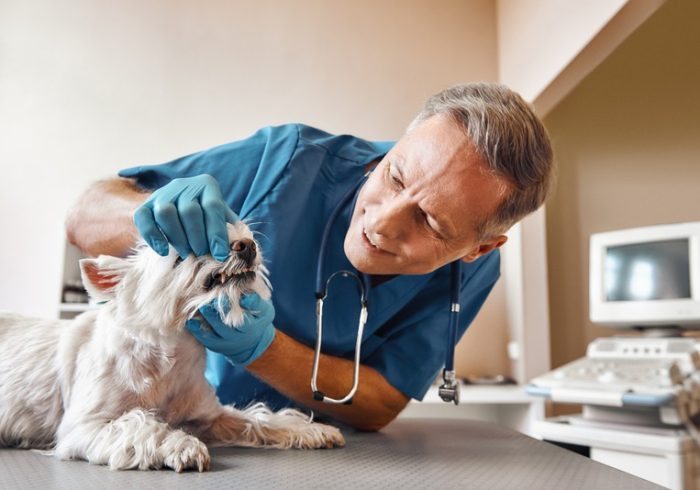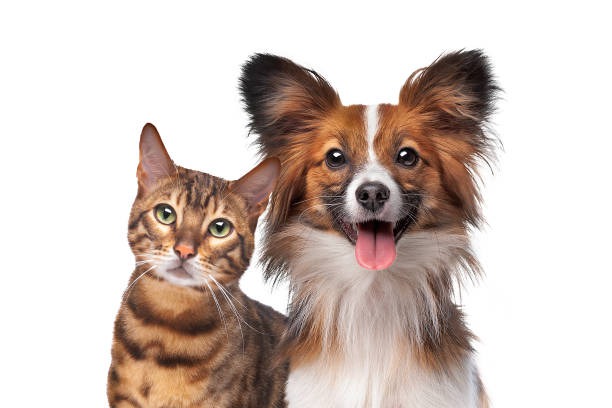When it’s time for your dog’s annual checkup, you might be curious about what the visit will entail. An annual exam is not just a routine jab of vaccinations; it’s a complete health check that ensures your furry friend is at the peak of health or helps catch any issues early. You’re not alone if you feel a bit anxious about what the appointment will bring, so let’s walk through what typically happens during your dog’s yearly visit to the vet.
Meet and Greet with Your Vet
Your vet will likely start the exam with some basic questions about your dog’s habits, diet, exercise, thirst, behavior, lifestyle, and any concerns you may have. It’s a good idea to come prepared with any questions or observations since your input is valuable for your dog’s health care. Think of this as a partnership where you and your vet work together for the well-being of your pooch.
Details of a Nose-to-Tail Physical Examination
A dog’s annual exam is crucial for maintaining their health, and the nose-to-tail physical is a vital component. This exam is about as detailed as it gets! Let’s break down the steps involved:
1. Eye Examination
-
Clarity: Vets look for clear and bright eyes, checking for any cloudiness that could signal a problem.
-
Irritation: Redness could point to allergies or infections.
-
Discharge: The presence of gunk in the corners of the eyes or tear staining can suggest infections or blockages.
2. Ear Assessment
-
Inflammation: Redness or swelling inside the ear is a red flag.
-
Wax and Cleanliness: An excessive build-up of wax or dirt can indicate poor health or a lack of grooming.
-
Odor: A strong smell can suggest an infection that needs to be addressed.
3. Oral Health Evaluation
-
Teeth: A check for plaque, tartar, or dental decay is key for a healthy mouth.
-
Gums: Healthy gums should be pink, not red or swollen, which could suggest gingivitis or gum disease.
-
Tumors: Any unusual lumps or bumps in the mouth are cause for further examination.
4. Skin and Coat Inspection
-
Coat Quality: Shiny and smooth coats are signs of good health
-
Skin Check: The vet will look for any dry patches, excessive oiliness, or signs of infection.
-
Parasites: They’ll keep an eye out for fleas and ticks, which can transmit diseases.
-
Lumps and Bumps: Any new or changed growths will be noted for possible further testing.
5. Cardiovascular and Respiratory Systems Monitoring
-
Heartbeat: Listening to irregular rhythms or heart murmurs is vital.
-
Breathing: Assessing the lungs for signs of labored breathing or coughing is key.
6. Abdominal Palpation
-
Organ Size: Enlarged organs can indicate underlying problems.
-
Discomfort: Reactions to belly rubs can allude to pain or sensitivities.
-
Masses: Any abnormal growths felt internally will require further diagnostics.
7. Weight Tracking
-
Scale Time: Keeping an eye on weight fluctuations helps manage overall health.
8. Musculoskeletal Evaluation
-
Joint Health: Checking for signs of swelling, pain, or arthritis.
-
Muscle Tone: Assessing for atrophy or uneven muscle development.
9. Neurological Checks
-
Reflexes: Ensuring reflex responses are normal for the breed and age.
-
Nerve Function: Watching for coordination and gait abnormalities that may signal neurologic issues.
Following the physical examination, your vet may also suggest diagnostic tests like blood work, fecal analysis, or urine tests to get a complete picture of your dog’s internal health. While annual exams are comprehensive, sometimes your pet’s specific condition requires additional expertise.
Suppose your dog has a bump that’s raising a concern or a symptom that points toward a more serious condition. In that case, your vet might refer you to a specialist, such as a leading veterinary oncology clinic. Veterinary oncologists specialize in diagnosing and treating cancer, which, unfortunately, is a common ailment in dogs, especially as they age.
Consultation and Personalized Advice
Your vet knows that an active partnership with pet owners is key to a pet’s health. After going through the detailed physical examination, vets take the time to discuss any findings and what they mean for your dog. It’s a chance to delve into topics like:
1. Nutrition and Diet
-
Custom Recommendations: Diet plans tailored to your dog’s age, breed, and activity level.
-
Weight Management: Strategies to keep your dog at a healthy weight, helping to prevent obesity-related diseases.
2. Skin and Coat Maintenance
-
Regular Grooming: Recommendations on grooming frequency and techniques.
-
Supplementation: Advice on essential fatty acids or other supplements to enhance skin and coat health.
3. Preventive Care
When it comes to keeping your dog healthy, prevention is key. Regular quick dog checkup appointments, which are less comprehensive than annual exams, can be a great way to stay on top of your dog’s health. These checkups focus on the essentials like verifying that your dog’s weight is stable, ensuring no new health issues have arisen, and providing peace of mind between annual exams.
4. Vaccinations and Parasite Prevention
Vaccines are one of the most effective ways to prevent disease in dogs. The annual exam often includes a review of your dog’s vaccination history and updating any necessary shots. Core vaccines are generally given based on your dog’s exposure risk and local disease prevalence.
5. Dental Health
Dental care shouldn’t be an afterthought. During the exam, your vet will check for signs of periodontal disease, which, if left untreated, can lead to major systemic issues. A professional dental cleaning or even daily tooth brushing may be suggested to keep those pearly whites in top shape.
Taking these steps during the annual nose-to-tail examination ensures a comprehensive health analysis, leaving no stone unturned in keeping your dog in tip-top condition.
Vet Examinations for New Pets
One of the main advantages of seeing a specialist is that they have the advanced training and technology to offer treatments such as chemotherapy, radiation therapy, and surgery if necessary. Early detection is crucial, so never hesitate to bring up any unusual signs you notice in your dog as early as possible.
If you’ve recently welcomed a new furry member to your family, puppy vet in Pflugerville services can be instrumental in getting your new pup off to a great start. These exams are vital for setting the foundation for a healthy life.
-
First Health Check: The initial visit checks for congenital disabilities and covers essential vaccinations.
-
Developmental Assessments: Regular checks ensure your puppy is growing at a healthy rate and hitting all their developmental milestones.
-
Spay/Neuter Counseling: Your vet can guide you through the process and determine the best time for these procedures.
-
Puppy Nutrition: Proper diet is crucial in these early stages, and your vet can offer guidance on the best type and amount of food for your pup.
Puppies and kittens require a bit more medical attention than adult pets, so expect more frequent visits during their first year of life. It’s a great time to establish good habits that will benefit them for years to come.
Wrapping Up
The annual exam is an excellent opportunity for you to ensure your dog is healthy and catch any issues early on. With a combination of a thorough physical examination, preventive care, and your observations at home, these visits are a cornerstone of a long, happy life for your canine companion. Remember, the goal is to keep your dog as healthy and happy as possible, and regular vet visits are a crucial component of this mission. There’s always a right time to ask questions or voice concerns about your dog’s health.




